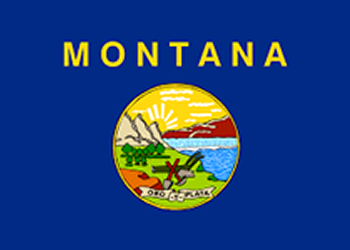Events that Impacted 2024
2024 was an eventful year, with many business and political ups and down that impacted the state’s economy, pointed out Patrick Barkey of the Bureau of Business and Economic Research during the Economic Outlook Seminar. Following are the top ten:
State personal income tax rate reductions take effect. The top rate for the Montana personal income tax rate fell from 6.5% to 5.9% on January 1, 2024. An earlier change had reduced the top rate from 6.9% and also folded the state’s seven earnings brackets into two.
The galloping prices for residential property caused another jump in market assessments performed by the Montana Department of Revenue and used by local
governments to calculate tax bills. Increases in taxable value of residential and commercial property averaging 31.5% brought intense scrutiny and new proposals for reform for the new Legislature to consider.
Last year saw to painful closures of wood products facilities in Missoula County. The Roseburg particle board plant closed in May 2024, citing competitive pressures from other, newer facilities. Pyramid Mountain Lumber closed its doors in October after 75 years of operation due to depressed lumber demand and labor availability issues.
Sibanye – Stillwater laid off 700 people from its Stillwater and East Boulder mines due to losses caused by the continued depressed level of palladium the primary product of the facility.
The U.S. Economic Development Administration announced that Montana’s Headwaters Tech Hub would receive a $41 million grant from the Regional Technology and Innovation Hub Program. The Hub will pursue opportunities and investments in smart photonic sensing systems and their deployment into industry sectors critical to U.S. national and economic security.
NorthWesten Energy announced that effective January 1, 2026, it would acquire, at no cost, two shares of the generating capacity of the Colstrip coal-fired electric generating plant in Rosebud County from Puget Sound Energy (370 megawatts) and Avista (222 megawatts) This will bring the company’s total share of the facility to 55%.
The failure of the St. Mary siphon over the St. Mary River near Babb, Montana, in the summer of 2024 presented significant challenges to Hi-Line irrigators and recreators, affecting ground water levels and Milk River flows.
Intermountain Health St. Vincent Regional Hospital in Billings unveiled its plans to build a new, 14-story, 737,000 square-foot facility located adjacent to its current hospital facility. This would be one of the largest construction projects in health care the state has ever seen. It is anticipated to be completed in 2029.
The North Plains Connector project, slated to build a 420-mile, high –voltage DC electric transmission line linking Colstrip to North Dakota got a boost from the announcement from the US Department of Energy that it would grant $47.5 million to Rosebud, Custer, and Fallon counties, in addition to the Northern Cheyenne Tribe, to fund infrastructure projects associated with the build-out.
The final rules for the Advanced Manufacturing Production Credit, part of the Inflation Reduction Act, gave access to a 10% tax credit for Sibanye -Stillwater mining of platinum and palladium in south central Montana. The original rule only included refiners, not miners, of critical minerals to qualify for the credit. The decision is expected to help support production at their facilities, currently struggling with profitability in the depressed palladium marketplace.


0 comments